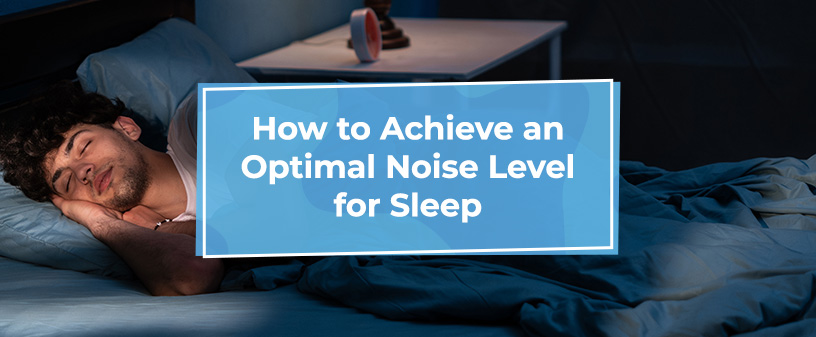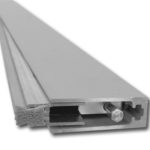
We need at least seven hours of sleep each night, as it is necessary for our bodies to function. It supports brain function, physical repair, the immune system, mood regulation and cardiovascular health.
Loud noises can disrupt your sleep and you will feel the effects the next day. Noise and lack of sleep go hand in hand. Instead of hoping your neighbors or roommates will quiet down, install soundproofing materials and take control of your sleep quality.
Effects of Sound on Your Sleep Cycle
When we sleep, our brain and body go through four stages. The first three stages gradually bring you to a deeper sleep before entering rapid eye movement (REM) sleep. On average, we each spend 90 to 120 minutes in each stage, fully completing it before moving on to an idyllic deep sleep.
High noise levels at night leave an impact on your health — whether they wake you or not. Environmental noise while you sleep can cause a stress response and increase how long you stay in the lighter sleep cycles, reducing or skipping REM altogether. Studies have shown that sleep disturbance correlates with cardiovascular disease, slow metabolism and other significant health conditions.
The Optimal Decibel Level for Sleep
The optimal noise level for sleep should be 30dB or less. If you require white noise at night, keep it to 50dB or less — much like the noise level of a running shower. The 70-80dB range is where you can begin to damage your sleep cycle.
Benefits of Achieving a Quiet Night’s Sleep
A quiet night’s sleep is a quality night’s sleep. When you achieve this each night, you will benefit from:
- Physical relaxation: Sleep and silence have a calming effect on your body, reducing our cortisol — or stress hormone — levels. As a result, we experience less anxiety and physical exhaustion the next day.
- Mental clarity: Sleeping works as a mental refresh button. This time helps our brain restore significant cognitive skills, such as memory, learning, focus and reflexes. Proper sleep is also a mood regulator, impacting how you interact with others.
- Long-term health: Achieving optimal sleep can positively impact your long-term health. Sleep promotes physical and mental functioning, lowering blood pressure and strengthening your immune system.
How to Create an Optimal Sleeping Environment
While your external sleeping environment is out of your control, you can change your internal environment. Soundproof Cow offers a variety of sound-reduction materials to help you achieve your sleep goals in your home or apartment.
Browse our categories below:
- Acoustic panels: Acoustic panels add mass to walls. Soundproof Cow offers decorative panels to blend in and match your room’s aesthetic.
- Sound insulation materials: Soundproof insulation is the way to go if you are building a house or otherwise have access to its inner workings. We have everything from door sweeps to flooring underlayments and wall insulation.
- Sound absorption items: Instead of reflecting sound, sound absorption materials absorb it to prevent extra, unwanted reverberation. Our selection features porous materials like fiberglass, foam and cotton.
Shop Sound Reduction Materials From Soundproof Cow Today
For over 30 years, Soundproof Cow has become more and more well versed on the ins and outs of the acoustic industry. We make soundproofing simple, whether you are a contracting professional or just someone who enjoys peace and quiet.
Our herd is here to help whenever you need us. We can provide an acoustic analysis with potential solutions for a better night’s sleep. Browse our wide selection or reach out to Soundproof Cow to get started today!










